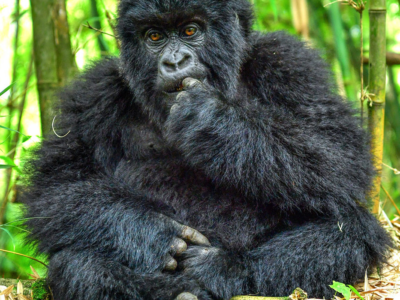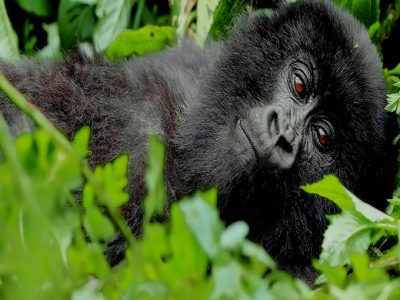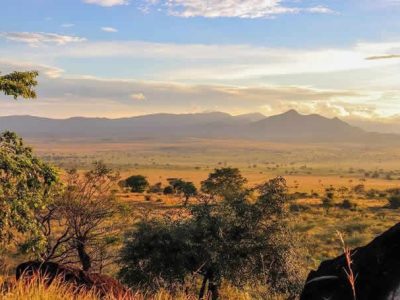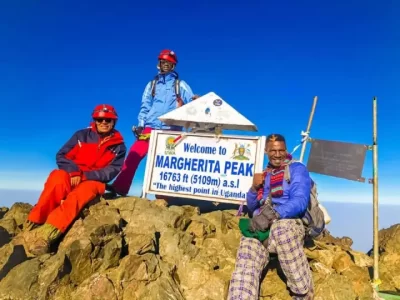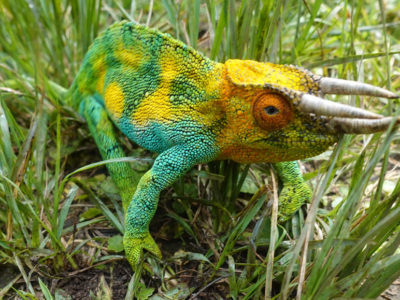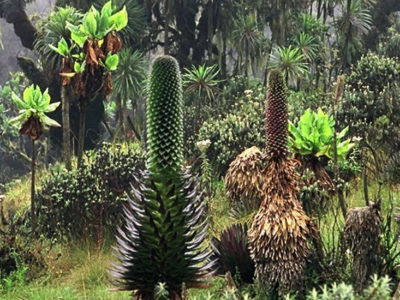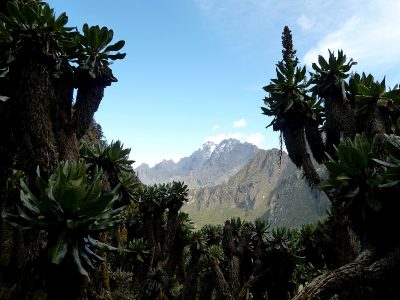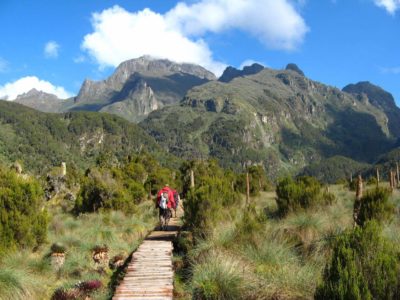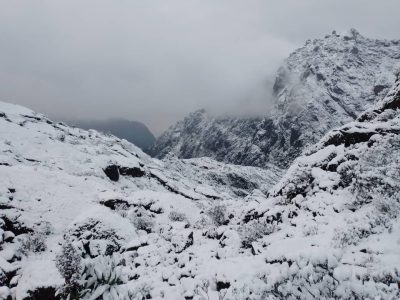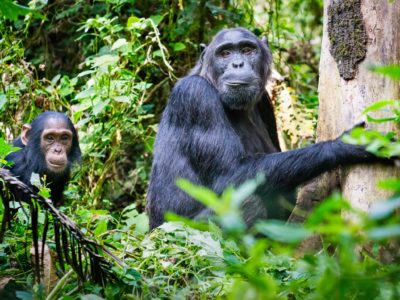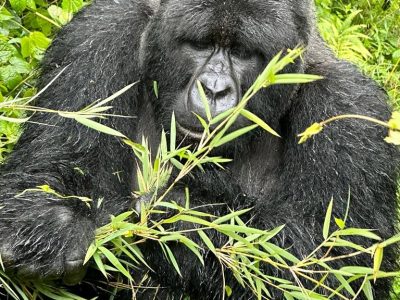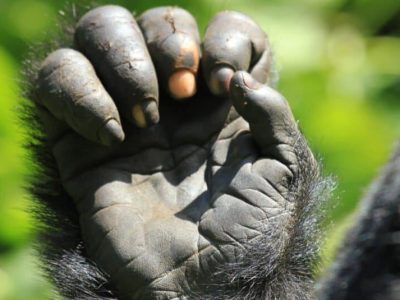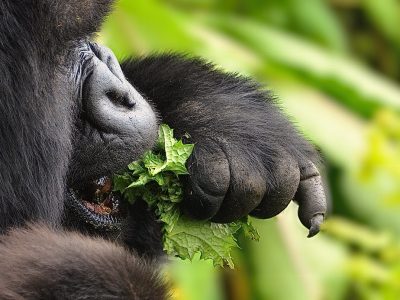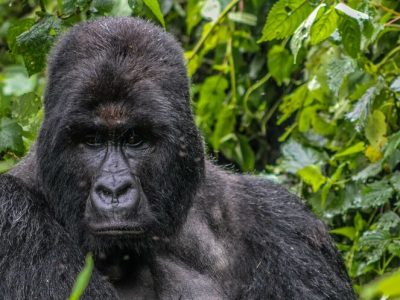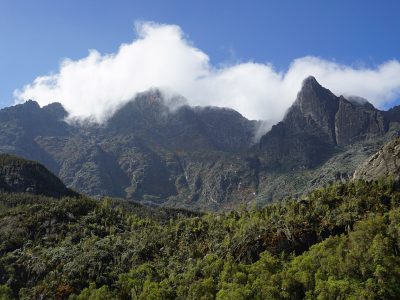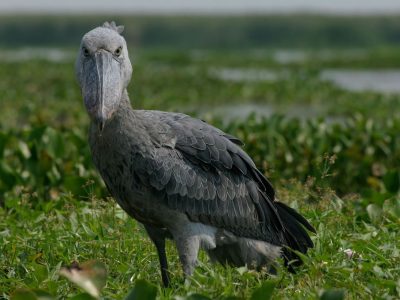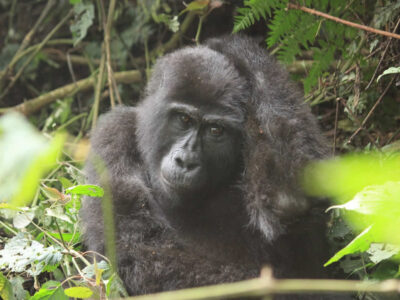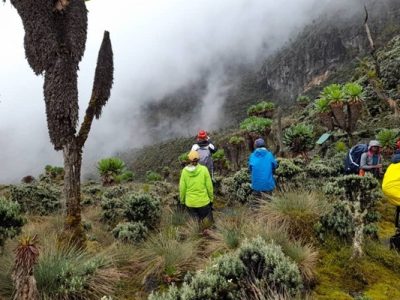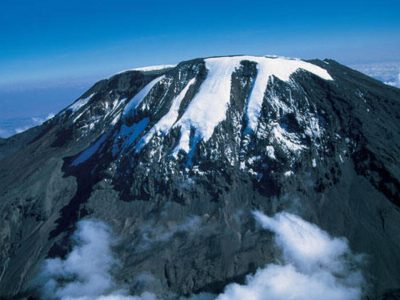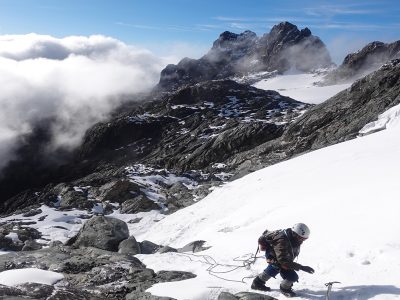planning to travel to east Africa to see the Apes ? Book and select 14 Days great Apes Safari in Rwanda and Uganda that is tailored by Rwenzori Expeditions the experts in Primate & Rwenzori Trekking tours for over 10 years in Africa. Find where to see apes as the case for best places to see gorillas in Africa the same is necessary for selecting the best Places to see the apes within East Africa.
East Africa is one of the best regions in the world to see great apes in their natural habitat like lush rain forests and national parks. The term great apes refer to a group of large primates that share a common ancestry with humans. Classified as hominid in science teachings, the ape group includes; gorillas, chimpanzees and bonobos.
In East Africa, these species can only be seen in four countries but in different national parks and sanctuaries though only three are most known. In this article, we bring you the top places to visit in case you wish to spend some precious time with the great apes.
If your planning to visit the Great Apes then consider taking Safari in Uganda, Rwanda and democratic republic of Congo for Life time experience in Africa. These destinations recommended are found in Uganda, Rwanda and Congo.
- Bwindi Impenetrable National Park (Uganda)
 Bwindi Impenetrable national park is part of the Bwindi Impenetrable forest situated along the Democratic Republic of Congo next to Virunga national park and on the edge of the Albertine Rift in Western Uganda. With a total surface area of 321 square kilometers, Bwindi is famous for protecting the endangered mountain gorillas one of the great apes and these are seen during gorilla trekking experience. The park is a home to almost half of the world’s remaining mountain gorillas. Trekking can be challenging due to steep terrain, but the chance to spend time with these majestic animals makes it worth it.
Bwindi Impenetrable national park is part of the Bwindi Impenetrable forest situated along the Democratic Republic of Congo next to Virunga national park and on the edge of the Albertine Rift in Western Uganda. With a total surface area of 321 square kilometers, Bwindi is famous for protecting the endangered mountain gorillas one of the great apes and these are seen during gorilla trekking experience. The park is a home to almost half of the world’s remaining mountain gorillas. Trekking can be challenging due to steep terrain, but the chance to spend time with these majestic animals makes it worth it.
- Mgahinga gorilla national park (Uganda)
Located in the southwestern part of Uganda, Mgahinga gorilla national park stretches over an area of 33.9 square kilometers making it one of the smallest parks in the country. Besides its sides, the park stands among the best destinations in East Africa where one can enjoy the habituated apes. Mgahinga is part of the Virunga mountains, the best location for the endangered mountain gorillas. Also, the park encompasses three inactive volcanoes – Mount Muhabura, Gahinga and Sabyinyo.
- Volcanoes National Park (Rwanda)
In northwestern part of Rwanda, Volcanoes national park is another destination where one can see the great apes. The park is part of the Virunga mountains and is known for offering a prime location for the endangered mountain gorillas. Sitting on a surface area of 160 square kilometers, is not only a home to the apes but also encompasses five of the eight volcanoes in the Virunga mountains – Karisimbi, Bisoke, Muhabura, Gahinga and Sabyinyo.
- Kibale National Park (Uganda)
 This is another destination in East Africa where the great apes can be seen. It is located in the western part of Uganda mostly known for protecting the amazing chimpanzee species. Also, the park is known among the destinations with the highest densities of primates in Africa, making it one of the best places for primate watching, including other species like colobus monkeys.
This is another destination in East Africa where the great apes can be seen. It is located in the western part of Uganda mostly known for protecting the amazing chimpanzee species. Also, the park is known among the destinations with the highest densities of primates in Africa, making it one of the best places for primate watching, including other species like colobus monkeys.
- Mahale Mountains National Park (Tanzania)
Lying on the eastern shore of Lake Tanganyika in Uvinza district of Kigoma region in Tanzania, Mahale mountains national park is also a destination in East Africa where one can witness the great apes. Besides its remoteness, the park provides a great chimpanzee trekking experience though it has few habituated chimp communities. Also, you can take part in other different experiences like hiking since the park was names after the Mahale mountain ranges.
- Gombe Stream National Park (Tanzania)
In the district of Kigoma in Tanzania, Gombe stream national park is also among the destinations where one can witness the great apes. Besides the fact that is one of the smallest national parks in Tanzania, Gombe stream offers an intimate chimpanzee tracking experience. It is also known as the destination where Jane Goodall conducted her famous research on chimpanzees.
- Nyungwe Forest National Park (Rwanda)
Located in the southwestern part of Rwanda, Nyungwe forest national park is renowned for as a beautiful rainforest offering chimpanzee trekking along with the opportunity to see many other primate species. It was named after one of the oldest forests in Africa – Nyungwe forest which is filled with a dense variety of plants, birds, and other wildlife.
- Virunga National Park (Democratic Republic of the Congo)
 Stretching over a total surface area of 7,768.93 square kilometers, Virunga is also listed among the destinations where one can see the great apes in East Africa. The park is located in the eastern part of the Democratic Republic of Congo and is known as Africa’s oldest national park and a UNESCO World Heritage Site. The park is a home to both mountain gorillas and chimpanzees which are ranked among the most visited apes.
Stretching over a total surface area of 7,768.93 square kilometers, Virunga is also listed among the destinations where one can see the great apes in East Africa. The park is located in the eastern part of the Democratic Republic of Congo and is known as Africa’s oldest national park and a UNESCO World Heritage Site. The park is a home to both mountain gorillas and chimpanzees which are ranked among the most visited apes.
- Budongo Forest (Uganda)
Located near Murchison Falls National Park, Budongo Forest is a great spot for chimpanzee tracking, especially for those combining it with a visit to the falls and a safari experience. Also, the forest is known for its former abundance of East African mahogany trees as well as being a home to several bird species of over 360 in number. The forest also records over 20 amphibian species, some 292 butterflies and other species.
- Kyambura gorge (Uganda)
Adjoining the mighty Queen Elizabeth national park, Kyambura gorge is known for protecting a number of great apes including the endangered chimpanzees. The gorge is located on the north-eastern side of Queen Elizabeth national park which is a home to several wildlife species including the four of the big five animals – elephant, leopard, buffalo and lion.
Tips for visiting the great apes
While preparing your safari to one of the destinations with the great apes, there are different requirements that you must possess. Here, we bring you the tips that can help you in your preparations;
Permits: Gorilla and chimpanzee trekking permits are required in most parks. Booking permits in advance is important, especially for gorilla trekking, as numbers are limited.
Fitness: Both gorilla and chimpanzee trekking can be physically demanding due to uneven terrain and dense forest.
In conclusion, each of the above locations offers a unique and unforgettable encounter with the great apes, set against the backdrop of some of East Africa’s most stunning landscapes.
The great Apes of Africa in Rwanda, Uganda and Congo
The great apes live exclusively in the dense forests of West and Central Africa. They’re widespread, but the dense forest habitat can make them as good as invisible in all but a few select spots. As a result, the best places to see great apes tend to be those areas where they’ve been studied and habituated, offering a great example of research and tourism working hand in hand.
The preferred habitat of all of the African great apes is thick forest, and many have an unfortunate predilection for living in some of the most unstable countries on the planet. This means that there’s a big difference between where the African ape’s range, and where visitors can realistically have a decent chance of a safe and meaningful encounter with them.
Is a monkey an ape?
People often confuse apes and monkeys. Although there are a number of differences between apes and monkeys (apes have a longer lifespan, larger body size, larger brain-to-body size ratio, and higher intelligence); the main difference is that monkeys have tails and apes do not have tails.
There are four types of apes in Africa
-
The Eastern gorilla
Eastern gorillas are a critically endangered great ape species found in the heart of Africa’s forests. Eastern gorillas can be divided into two subspecies—the eastern lowland gorilla and the mountain gorilla. The eastern lowland gorilla is also called Grauer’s gorilla, especially among scientists.
Eastern lowland gorillas, or Grauer’s gorillas, are only found in the main tropical rain forest of the Democratic Republic of Congo and these conservation parks are Kahuzi-Biega and Maiko National Parks, though much of their range encompasses unprotected forest areas.
Mountain Gorillas , As their name would suggest, mountain gorillas live in the mountains. The mountain gorilla subspecies is restricted to two separate areas of Afromontane Forest—the Bwindi Impenetrable National Park in southwestern Uganda and Virunga Massif, a volcanic mountain range spanning the Democratic Republic of Congo, Rwanda, and Uganda in Virunga national park, Volcanoes national park and Mgahinga gorilla national park.
Gorillas are one of humans’ closest genetic relatives, descending from a common ancestor 10 million years ago. Analysis of the gorilla genome found that gorillas share more than 96% of their genes with humans. Gorillas bear some physical and behavioral resemblance to humans. They have been observed to display various emotions, from laughing and playing to crying and grieving.
The western gorilla
The western gorilla is a great ape found in Africa, one of two species of the hominid genus Gorilla. Large and robust with males weighing around 168 kilograms (370 lb), the species is found in a region of Midwest Africa, geographically isolated from the eastern gorilla. The hair of the western species is significantly lighter in color.
The western gorilla is the second largest living primate after the eastern gorilla. Two subspecies are recognised: the western lowland gorilla is found in most of West Africa; while the Cross River gorilla is limited to a smaller range in the north at the border of Cameroon and Nigeria.
Western lowland gorillas are smaller and lighter than the other gorilla subspecies, with short hair, a wider skull and a more pronounced brow ridge. The ears also appear small in relation to the head. There is also a more pronounced difference between the sexes, with females being almost half the size of silverbacks.
Cross River Gorillas are distinguished from Western Lowland Gorillas by their significantly lower cheek tooth surface area, smaller vault volume, narrower biglenoid diameter and narrower incisor row and palate width.
The Chimpanzee
There are four sub populations of the chimpanzee — the western chimp, the Nigeria-Cameroon chimp, the central chimp, and the eastern chimp. This great ape is one of our closest relatives, sharing about 98 percent of their genes with us. They have thickset bodies with short legs, opposable thumbs, no tails, and long arms that are 1.5 times their height that extends beyond their knees. Much of their body is covered with long black hair, but the face, ears, fingers, and toes are bare.
They are intelligent, curious, noisy, and social. Chimps live in loose communities which can number anywhere from ten to more than 100 individuals. They can share a home range that they protect from intruders and will sometimes forage for foods in groups. They exhibit complex patterns of behavior, many of which are learned, and can solve problems, plan for anticipated events, as well as make and use tools. They have even been seen utilizing medicinal plants for a variety of ailments.
The Bonobos
Our closest cousins, bonobos share 98.7 percent of our genetic makeup. They are about two-thirds the size of humans and are covered with dark hair. They are distinguished by their black faces, red lips, two or three webbed toes, a tail tuft, and parted long hair. Unlike their closest cousins, the common chimpanzees, they are not divided into subspecies.
Females become sexually mature after they are 12 years old and may give birth soon after. However, females give birth to a single infant every five to six years, and they tend to nurse and carry their babies for five years. As a result, population growth cannot happen fast enough to counter high levels of poaching, habitat loss, and human encroachment
Best time to go on a great ape safari in East Africa
Unlike any other kind of safari, an African great ape trek can be successful all year round. Mountain and western lowland gorillas are easily found, even during the rainy seasons. So as long as you are resilient to the weather, you can see them in their natural habitat, whatever the weather.
In the three primary gorilla and chimpanzee trekking areas of Africa, the dry seasons are the same — in the winter months between June and September, and towards the end of the year from December to February. These parts of the year can be considered safer for visitors, particularly with regards to malaria, and also allow for a far easier trek on foot. That said, the Congo is rainy for the majority of the year.

